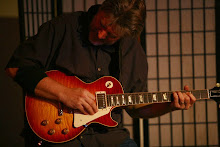1. Chords must be built by stacking notes (scale tones) in an ascending order. 1-3-5-7--9-11 etc. You cannot, for example, build a chord such as: 1-3-11-5-9 or 9-1-3-5-13-11. These must be stacked in order: 1-3-5-7-9-11 and 1-3-5-7-9-11-13. And you must include all lower extensions below higher ones such as 1-3-5-b7-9-11-13 for example, C13.
2. The 7th degree is always flatted if the 3rd is also flatted. Such as; 1-b3-5-b7.
However, if, for example, the chord needed was a minor with a natural 7th, (1-b3-5-7) then the chord symbol must show; Cmin/maj7 (a C minor triad with a major 7th on top).
3. All chords in the Dominant family must have the 7th flatted while the third remains major. Dominant 7th's such as C9; 1-3-5-b7-9 or C11; 1-3-5-b7-9-11, or C13; 1-3-5-b7-9-11-13. Also, the chord symbol for Dominant 7th’s do not show the flatted 7th. They are written; C7 or Eb7 etc (1-3-5-b7) It is assumed that the 7th is flatted. Dominant family chords always have just the major triad name; C, and the 7 or highest extension in the chord symbol name (C9, C11 or C13).
4. The word “Add” is used to add only that pitch to a chord. Cadd9 or Cmin6add#11. Suspend means to raise the 3rd to a 4th, such as C9sus or Cmin9sus. (both of these examples happen to result in the same chord)
Some Sample Chord Constructions:
Cmin7 1-b3-5-b7 (C-Eb-G-Bb)
Cmaj7 1-3-5-7
C7 1-3-5-b7
Cmin7b5 1-b3-b5-b7
Cdim7 1-b3-b5-bb7
C9 1-3-5-b7-9
C11 1-3-5-b7-9-11
C13 1-3-5-b7-9-11-13
Cmin9 1-b3-5-b7-9
Cmin11 1-b3-5-b7-9-11
Cmin13 1-b3-5-b7-9-11-13
Cmaj9 1-3-5-7-9
C7b9 1-3-5-b7-b9
C9b5 1-3-b5-b7-9
C13#9 1-3-5-b7-#9-11-13
Cmin7#5 1-b3-#5-b7
Cmaj7#11 1-3-5-7-#11
Csus add9 1-4-5-9
C13#5b9 1-3-#5-b7-b9-11-13
Caug7 1-3-#5-b7
Cmin/maj9 1-b3-5-7-9
Omitting Tones
The above explanation shows how chords are constructed from a basic music theory point of view. When it comes to practical application, especially for guitar players, notes are usually omitted or removed from a chord voicing. In fact it’s a necessity when attempting to play a 7-note chord on an instrument only capable of six.
So which ones can be left off? It usually depends on the musical situation but here’s a practical guide to follow:
1. Roots can sometimes be omitted from a chord if it is being played by other instruments such as a bass or implied by the situation.
2. 5ths can often be omitted because of the physics of sound. The 5th is implied by the root of the chord and is even present as an overtone in the root.
3. Lower extensions can be omitted. If a chord is Cmaj13, for example, the lower extensions 9th and 11th can be removed.
Here’s the bottom line when it comes to omitting chord tones:
You should try to have all the tones necessary to capture the sound and personality of the chord.
Chords should have a 3rd to tell the listener the chord is major or minor.
Chords need to have the 7th to tell the listener the chord is either major 7th or dominant 7th. And chords need to have any additions, suspensions or extensions that are written in the chord symbol.
Also, any alterations, shown in the chord symbol, should be played.
Below are some example chords shown in reduced form (taken from the list above).
The root is retained for these examples.
Cmin9 1-b3-b7-9
Cmin11 1-b3b7-11
Cmin13 1-b3-b7-13
Cmaj9 1-3-7-9
C7b9 1-3-b7-b9
C9b5 1-3-b5-b7-9
C13#9 1-3-b7-#9-13
Cmin7#5 1-b3-#5-b7
Cmaj7#11 1-3-5-7-#11
Csus add9 1-4-5-9
C13#5b9 1-3-#5-b7-b9-13
Caug7 1-3-#5-b7
Cmin/maj9 1-b3-7-9
On guitar, choosing voicings is up to each player and is usually influenced by the music style being played. In many situations, and depending on the chord, it may be preferable to include notes such as the 5th and some lower extensions to get a fuller sound. Other times you might play small two or three note voicings to get the point across. There’s just no exact rule.
-Don Mock
Subscribe to:
Post Comments (Atom)

No comments:
Post a Comment